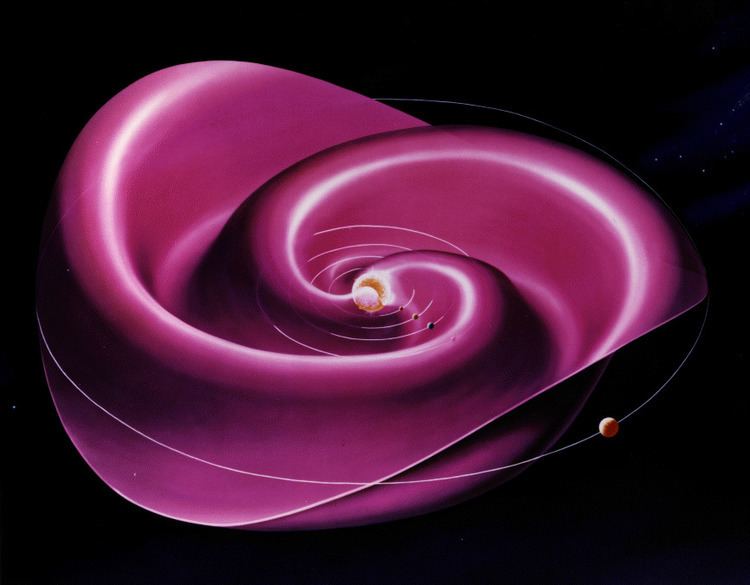 | ||
The interplanetary magnetic field (IMF), now more commonly referred to as the heliospheric magnetic field (HMF), is the component of the solar magnetic field which is dragged out from the solar corona by the solar wind flow to fill the Solar System.
Contents
Coronal and solar wind plasma
The coronal and solar wind plasmas are highly electrically conductive, meaning the magnetic field lines and the plasma flows are effectively "frozen" together and the magnetic field cannot diffuse through the plasma on time scales of interest. In the solar corona, the magnetic pressure greatly exceeds the plasma pressure and thus the plasma is primarily structured and confined by the magnetic field. With increasing altitude through the corona, solar wind acceleration results in the flow momentum exceeding the restraining magnetic tension force and the coronal magnetic field is dragged out by the solar wind to form the HMF.
The dynamic pressure of the wind dominates over the magnetic pressure through most of the Solar System (or heliosphere), so that the magnetic field is pulled into an Archimedean spiral pattern (the Parker spiral) by the combination of the outward motion and the Sun's rotation. In near-Earth space, the IMF nominally makes an angle of approximately 45° to the Earth-Sun line, though this angle varies with solar wind speed. The angle of the IMF to the radial direction reduces with helio-latitude, as the speed of the photospheric foot point is reduced.
Depending on the polarity of the photospheric foot point, the heliospheric magnetic field spirals inward or outward; the magnetic field follows the same shape of spiral in the northern and southern parts of the heliosphere, but with opposite field direction. These two magnetic domains are separated by a two current sheet (an electric current that is confined to a curved plane). This heliospheric current sheet has a shape similar to a twirled ballerina skirt, and changes in shape through the solar cycle as the Sun's magnetic field reverses about every 11 years.
Magnetic field at the Earth
The plasma in the interplanetary medium is also responsible for the strength of the Sun's magnetic field at the orbit of the Earth being over 100 times greater than originally anticipated. If space were a vacuum, then the Sun's magnetic dipole field, about 10−4 teslas at the surface of the Sun, would reduce with the inverse cube of the distance to about 10−11 teslas. But satellite observations show that it is about 100 times greater at around 10−9 teslas. Magnetohydrodynamic (MHD) theory predicts that the motion of a conducting fluid (e.g. the interplanetary medium) in a magnetic field, induces electric currents which in turn generates magnetic fields, and in this respect it behaves like a MHD dynamo.
